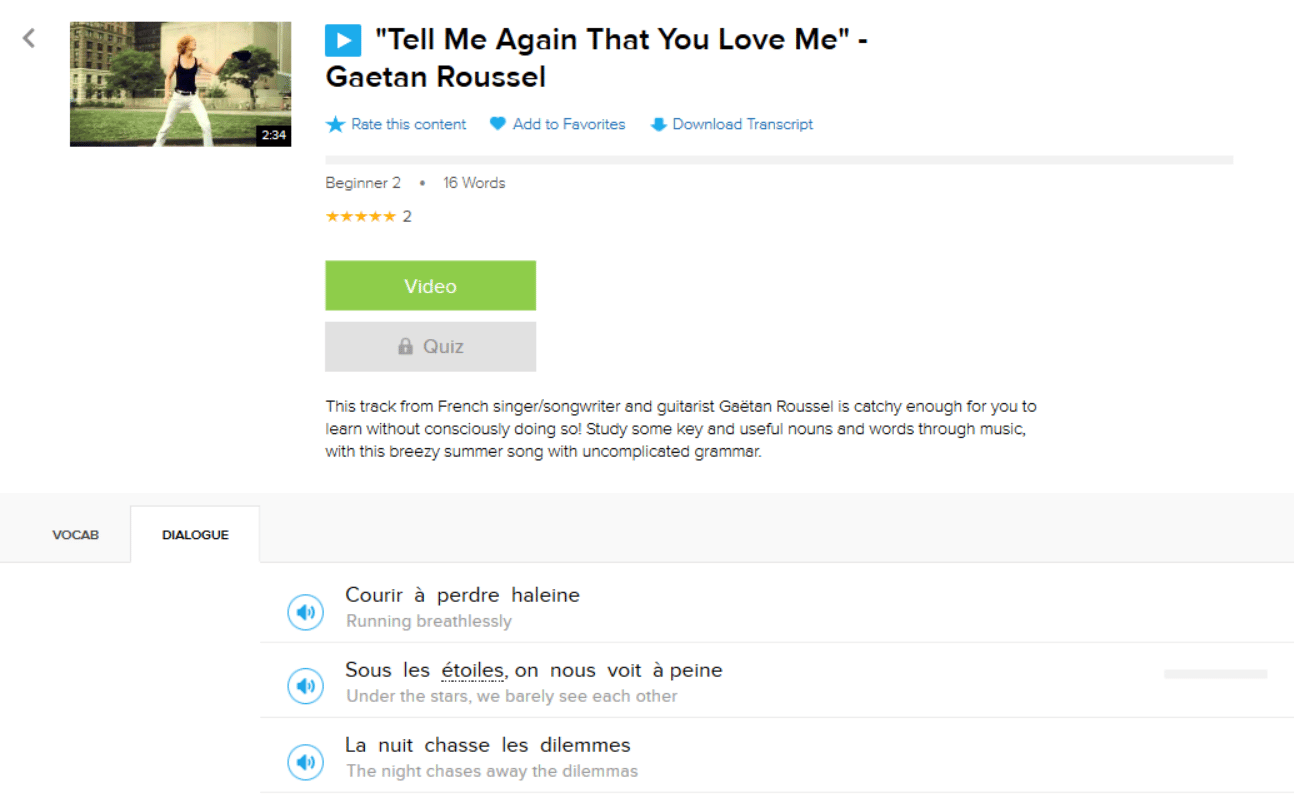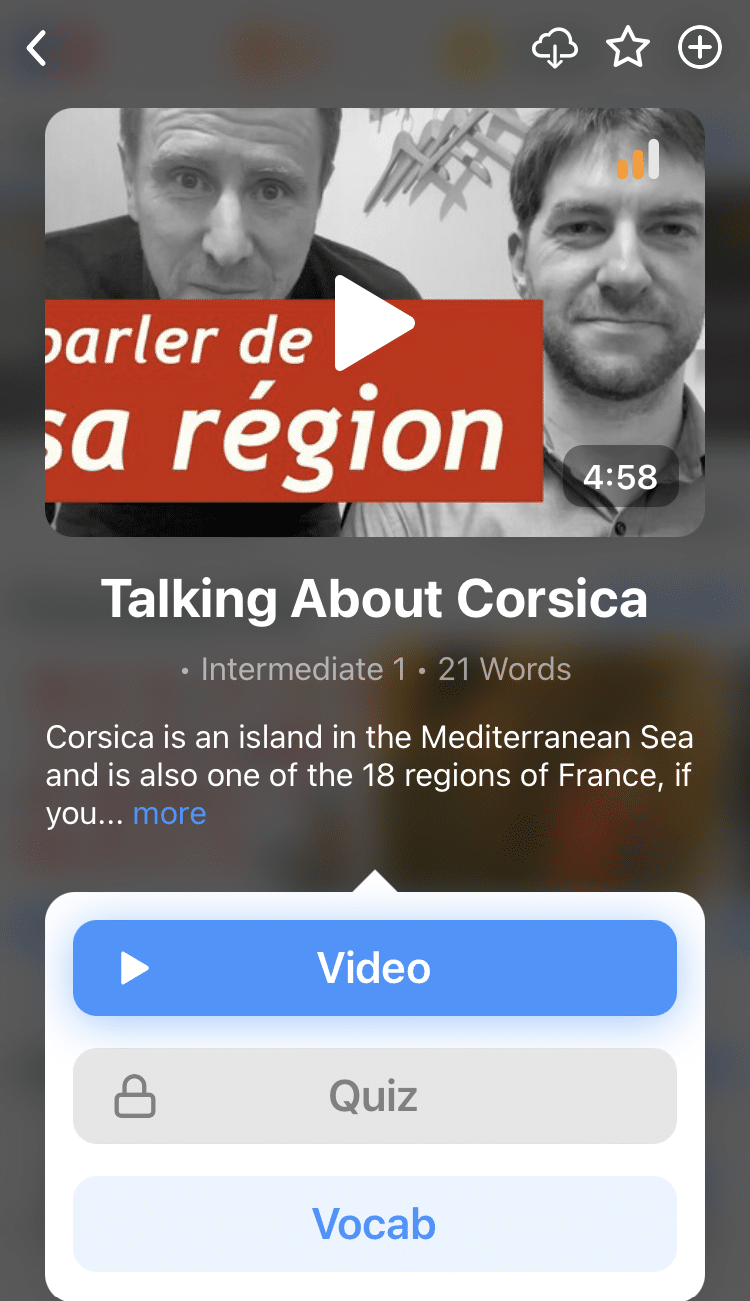How to Write a Formal Letter in French

Formal French letters are all about turning your flowery French writing skills up to 11. You need the right letter structure and polite expressions to write a formal letter fluently.
Below I’ll give you the formula to do it right: five steps to craft a formal French letter that’ll impress any reader—with added tips for personal letters as well as emails.
Download: This blog post is available as a convenient and portable PDF that you can take anywhere. Click here to get a copy. (Download)
How to Write Formal French Letters
This may sound obvious, but before you can write a formal letter in French, you have to understand its different parts. Bear in mind that French letters are very different from those in English-speaking countries, so it’s important to follow the template below.
1. Your name and contact information in upper left-hand corner
Start with your name as the sender. Write the abbreviated form of your title (“M.” for Monsieur and “Mme.” for Madame), followed by your first name and last name in that order.
Note that Mademoiselle (Mlle.) isn’t often used in formal writing. In other words, if you’re a woman, it’s acceptable to use “Mme.” regardless of your actual marital status.
Remember to capitalize your last name.
Then, write your contact information (address, phone number, etc.) below your name. If you’re writing your address, write the street in one line followed by the postal code and city in another line below it. Of course, if you’re living in a country other than France, that country should be written in yet another line.
Your header will look like this:
Mme Marie DURAS
45 rue Gaston
12345 Toulouse
2. Below, recipient’s name and contact information on right-hand side
The recipient’s header follows the same format as the sender’s header, except you also need to write the sender’s title and the company they work for underneath their name.
For example:
M. Michel DUBOIS
Directeur
Société de France
24 avenue du General de Gaulle
45678 Orléans
3. Start message with a salutation
Unlike in English, you don’t put the French equivalent of “Dear Sir or Madam,” or “To Whom it May Concern.” It’s actually much simpler.
First, put your current location and date on the right-hand side below the recipient’s header.
Paris, le 14 septembre 2023 (Paris, September 14, 2023)
Then, write how you’d formally address your recipient on the left-hand side below your current location and date. It can be any of the following:
| French Forms of Address | English Translation |
|---|---|
| Monsieur | Sir/Mister |
| Madame | Madam |
| Monsieur/Madame | Sir/Madam |
| Messieurs | plural of Monsieur |
| Mesdames | plural of Madame |
4. Write the body similar to how you would in English
There’s not really much to explain here. A standard formal French letter contains an introduction of yourself.
For example, if you’re applying for a computer-related job, you can start with:
Hautement entraîné dans l’informatique, je vous propose ma candidature pour… (“Highly trained in computer science, I propose to you my candidacy for…”)
Then, write the body of the letter as you’d write it in English.
One thing to keep in mind about French is the difference between the informal “you” (tu) and formal “you” (vous). In personal letters, tu is used, but in formal letters, you should stick with vous. For example:
Vous avez réalisé … (You have executed/carried out …)
Tu as réalisé … (You have executed/carried out …)
They mean the same thing, but the first one is more formal than the second.
5. Close with a formule de politesse and signature
A key difference in formal French letter writing is the use of long and flowery closing salutations. Whereas in English we might just say “Sincerely,” in French you’d write something like:
Je vous prie d’accepter, Madame Delacroix, l’expression de mes sentiments distinguées. (I ask you to accept, Ms. Delacroix, the expression of my distinguished sentiments.)
Veuillez vous agréer, Monsieur le Directeur, l’expression de ma consideration distinguée. (Please accept/agree with, Mr. Director, the expression of my distinguished consideration.)
This may seem overly complicated and overwhelming, but in reality, the formula is simple. Also, don’t forget to put your name and signature at the bottom right side of the letter, like this:
Marie DURAS
Responsable de ventes (Sales manager)
How Personal French Letters Differ from Formal Ones
In letters to family and friends, you don’t have to worry about dates, signatures and contact information.
Your opening salutation may be something affectionate like Cher François (Dear François) or Ma soeur chérie (My dear sister). Instead of a formule de politesse, you can put Je vous embrasse (I kiss you) or the more informal Bisous (Kisses).
The topic of informal vs. formal writing brings up an important point: your ability to write formal French letters can be improved when you know “authentic” French— that is, the natural way in which the language is spoken by real native speakers.
For some reason, it’s easy for letters to become overly dry if you just rely on the technicalities. This is a problem for any letter, formal or otherwise. You want to sound as genuine as you are eloquent.
Being familiar with authentic French, and knowing the differences between informal and formal speech, can make the words and sentences you write flow more easily.
Therefore, you want to expose yourself to native French conversations. You can also study using authentic French media such as books, TV shows and podcasts. They can show you tidbits of French culture while also describing situations that call for certain levels of formality.
Should You Write French Emails Like Letters?
Keep in mind that emails took a longer time to adopt in France than in English-speaking countries. In fact, until recently, French business correspondence was conducted almost entirely using lettres manuscrites (written letters) despite the presence of computers.
With this in mind, I generally use the same format described above when sending formal French emails.
How Can Writing Formal Letters Improve Your French?
The complexity and artistry that go into formal letter writing will teach you the ins and outs of advanced French writing. I spent two semesters studying formal correspondence, and that was one of the best decisions I made while learning French. Here’s why I think so.
In French, sentences are works of art
This may be subjective, but in my experience, French text tends to flow more smoothly and use a greater variety of vocabulary than English. Whereas in English we tend to get straight to the point, French adds a lot of dressing on top.
For example, check out this sentence I found on YouTube: J’ai la plaisir de poser ma candidature pour le poste annoncé comme un professeur d’informatique. (I have the pleasure to pose my candidacy for the announced job opening as a computer science professor.)
That sentence reads well enough! In English, on the other hand, we’d say something like “I would like to apply for the computer science professor job opening.” As you can see, formal French letters can be more verbose and complex than English letters.
You can now turn any YouTube video into a language learning lesson with the help of FluentU.
FluentU takes authentic videos—like music videos, movie trailers, news and inspiring talks—and turns them into personalized language learning lessons.
You can try FluentU for free for 2 weeks. Check out the website or download the iOS app or Android app.
P.S. Click here to take advantage of our current sale! (Expires at the end of this month.)
Build a wide professional vocabulary
You may have already heard how any form of writing in French will improve your vocabulary knowledge—and it’s true! Letter writing requires you to learn words like the following.
| French Professional Vocabulary | English Translation |
|---|---|
| Expediteur | Sender |
| Destinataire | Recipient |
| Objet | Subject of the letter |
| Formule d'appel | Salutation |
| Date | Date |
| Formule de politesse | Closing salutation |
| Signature | Signature |
| Coordonnées | Contact information |
| Lettre | Letter |
Since they’re so often used in professional settings, formal French letters are a particularly great source of French business vocabulary. That’s because they tend to be industry-specific.
For example, a formal letter or intra-company memo from the Quebec aircraft manufacturer Bombardier will use different technical words from the French fashion giant Chanel.
Practice grammatical structures
It’s worth mentioning that a quality formal letter will make use of all your grammatical knowledge. You’ll be crafting long sentences, using the subjunctive mood (for hypotheticals, possibilities, etc.) and writing modal verbs (to politely ask for things).
Gain key insights into French culture
It’s impossible to master writing French letters without looking at French culture as a whole. The complexity of formal French letters showcases something much bigger: love and pride for the language.
Where to See Formal French Letter Examples and Ideas
The best description of a French letter will never replace actually seeing (or better yet, writing) one. Below, I’ve listed a few sites that are chock-full of information on French letter writing and samples.
French Today
French Today offers a wonderfully detailed summary of French letter writing. It’s a treasure trove of information on French and a great site for a general overview of French letters, including how to write the addresses, the different parts, etc.
I particularly like how French Today explains the importance of tu vs. vous and when to use them in letters, so it’s a great site for beginners.
french-linguistics
If you’re looking for ideas on how to craft a strong formal French letter, check out french-linguistics. Just as its name says, french-linguistics shines a light on the nitty-gritty of French grammar and syntax.
With respect to formal letters, the site provides a great explanation on formules de politesse. Because of its highly technical content, I’d say French-linguistics is best for intermediate and advanced learners.
VCE French
This YouTube video offers great descriptions and examples of real-life scenarios for formal French letters. It shows you sample letters and breaks them down with explanations of the elements and important grammar structures.
Whether you want to study in a French-speaking country, or even land a job speaking French, mastering the art of formal French letter writing is an indispensable skill. Although the 21st century has done away with a lot of formality, you’ll find that formal French letter writing is alive and well.
Download: This blog post is available as a convenient and portable PDF that you can take anywhere. Click here to get a copy. (Download)
And one more thing...
If you like learning French on your own time and from the comfort of your smart device, then I'd be remiss to not tell you about FluentU.
FluentU has a wide variety of great content, like interviews, documentary excerpts and web series, as you can see here:

FluentU brings native French videos with reach. With interactive captions, you can tap on any word to see an image, definition and useful examples.

For example, if you tap on the word "crois," you'll see this:

Practice and reinforce all the vocabulary you've learned in a given video with learn mode. Swipe left or right to see more examples for the word you’re learning, and play the mini-games found in our dynamic flashcards, like "fill in the blank."

All throughout, FluentU tracks the vocabulary that you’re learning and uses this information to give you a totally personalized experience. It gives you extra practice with difficult words—and reminds you when it’s time to review what you’ve learned.
Start using the FluentU website on your computer or tablet or, better yet, download the FluentU app from the iTunes or Google Play store. Click here to take advantage of our current sale! (Expires at the end of this month.)








